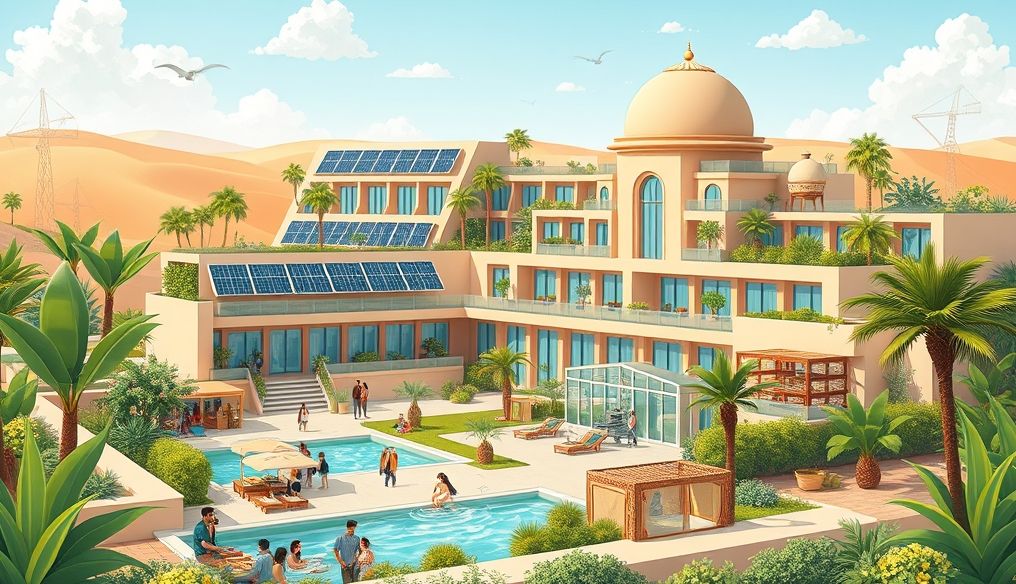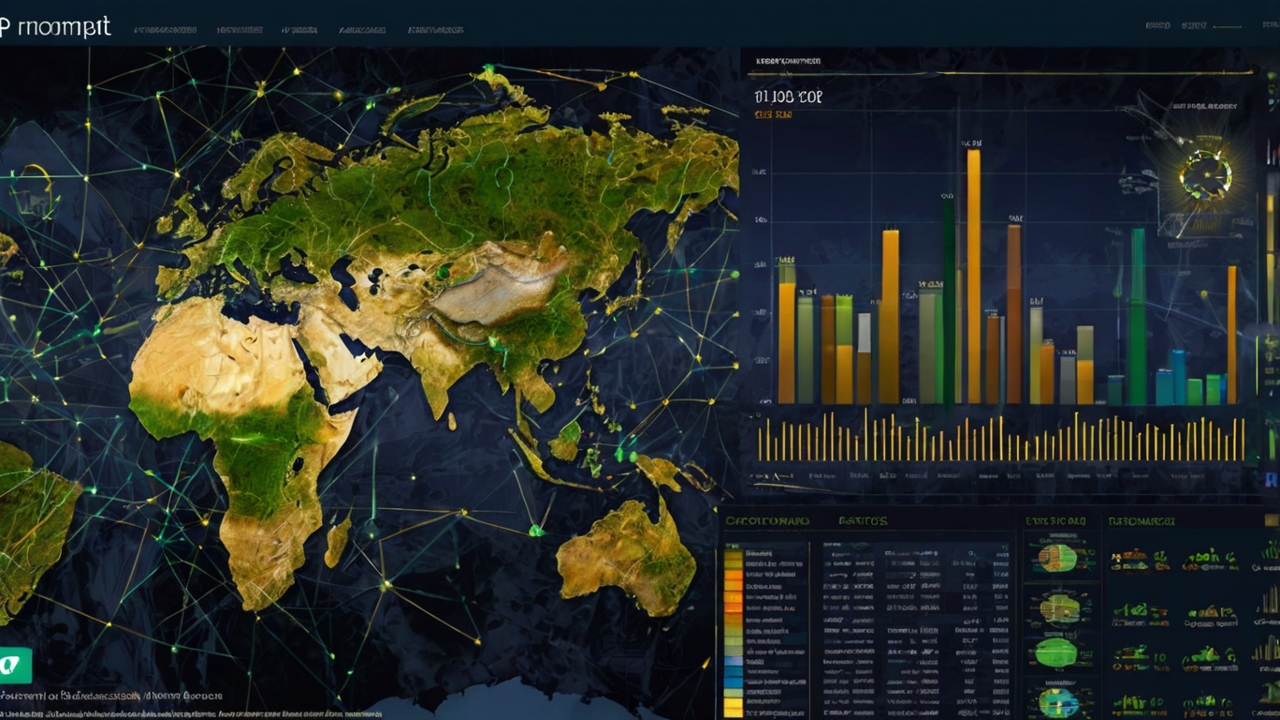Introduction: The Tourism and Hospitality Sector in the MENA Region
The tourism and hospitality sector in the Middle East and North Africa (MENA) region is experiencing significant growth, driven by massive government investments, technological advancements, and an increasing focus on sustainable tourism. These factors create promising investment opportunities for both local and international investors.
Chapter 1: Overview of the Tourism and Hospitality Market in the Region
Market Size and Growth
The tourism and hospitality market in the MENA region reached $185 billion in 2023 and is projected to reach $260 billion by 2028, with a compound annual growth rate (CAGR) of approximately 7%. This growth is driven by an increase in the number of tourists, infrastructure development, and diversification of tourism offerings.
Factors Influencing Growth
- Government Investments: Governments in the region are investing billions of dollars in developing tourism infrastructure, such as airports, hotels, and entertainment facilities.
- Technological Advancements: Technology plays a crucial role in enhancing the tourist experience through online booking applications, artificial intelligence, and virtual reality.
- Sustainable Tourism: Awareness of the importance of sustainable tourism is increasing, prompting companies to adopt environmentally friendly practices.
- Diversification of Tourism Offerings: The region is moving towards diversifying its tourism offerings to include cultural tourism, eco-tourism, and medical tourism, in addition to traditional tourism.
Chapter 2: Investment Opportunities in Hotels and Resorts
Luxury Hotels
Luxury hotels are among the most attractive sectors for investment, with the region experiencing increasing demand for luxury accommodation from tourists and business travelers. For example, Saudi Arabia is investing heavily in building luxury hotels in the NEOM and Red Sea projects.
Mid-Range Hotels
Mid-range hotels target a wide range of tourists and are characterized by their affordable prices and good services. This sector represents a good investment opportunity, especially in major cities and emerging tourist areas.
Tourist Resorts
Tourist resorts are preferred destinations for families and individuals seeking relaxation and entertainment. Investments can be made in beach resorts, desert resorts, and mountain resorts, depending on the location and target audience.
Chapter 3: Investing in Sustainable Tourism
Eco-Friendly Hotels
Demand is increasing for eco-friendly hotels that adopt sustainable practices, such as using renewable energy, waste management, and water conservation. Investors can capitalize on this trend by building or renovating hotels to meet sustainability standards.
Eco-Tourism
Eco-tourism is a promising sector that allows tourists to explore nature and contribute to its conservation. Investments can be made in developing eco-resorts, organizing eco-tours, and supporting local communities.
Sustainable Practices in Hospitality
Sustainable practices in hospitality include using local and organic products, reducing energy and water consumption, recycling waste, and supporting local communities. Investors can implement these practices in all aspects of their operations to achieve sustainability goals.
Chapter 4: Investing in Technology and Smart Hospitality
Mobile Applications
Mobile applications are an essential tool for enhancing the tourist experience by providing information about tourist destinations, booking hotels and flights, and communicating with hotels and restaurants. Investments can be made in developing customized applications for hotels and resorts, or comprehensive applications for tourist destinations.
Artificial Intelligence
Artificial intelligence can be used to improve customer service, enhance operational management, and customize the tourist experience. For example, chatbots can be used to answer customer questions, recommendation systems can provide personalized suggestions, and data analytics can improve inventory management.
Internet of Things
The Internet of Things can be used to connect devices and equipment in hotels and resorts, enabling remote control, improving energy efficiency, and enhancing the tourist experience. For example, sensors can be used to monitor energy and water consumption, smart lighting systems can adjust lighting automatically, and temperature control systems can provide comfort for guests.
Chapter 5: Investing in Restaurants and Cafes
Luxury Restaurants
Luxury restaurants are experiencing increasing demand from tourists and residents, who are looking for unique and distinctive dining experiences. Investments can be made in establishing luxury restaurants that offer innovative international or local cuisine.
Specialty Cafes
Specialty cafes are preferred destinations for young people and travelers, who are looking for comfortable places to relax, work, and socialize. Investments can be made in establishing specialty cafes that offer different types of coffee, tea, and other beverages.
Healthy Restaurants
Awareness of the importance of healthy eating is increasing, driving demand for restaurants that offer healthy and nutritious meals. Investments can be made in establishing healthy restaurants that offer vegetarian, gluten-free, and high-protein meals.
Chapter 6: Investing in Entertainment Activities
Theme Parks
Theme parks are preferred destinations for families and children, offering a variety of games and entertainment activities. Investments can be made in creating new theme parks or developing existing ones.
Museums and Exhibitions
Museums and exhibitions are important cultural destinations, showcasing local history, art, and culture. Investments can be made in creating new museums and exhibitions or developing existing ones.
Sports Activities
Sports activities are popular entertainment activities, providing an opportunity to exercise and enjoy the outdoors. Investments can be made in establishing sports centers, golf courses, diving centers, and surfing centers.
Chapter 7: Potential Challenges and Risks
Political and Economic Risks
Political and economic risks are among the most significant challenges facing investors in the tourism and hospitality sector. Political and economic events can affect the flow of tourists, price stability, and operating costs.
Intense Competition
The tourism and hospitality sector faces intense competition, with companies competing to attract tourists and residents. Investors must be aware of the competition and offer unique and distinctive products and services.
Changes in Tourist Preferences
Tourist preferences are constantly changing, requiring companies to be flexible and able to adapt to these changes. Investors must be aware of the latest trends in the market and offer products and services that meet the needs of tourists.
Chapter 8: Strategies for Investment Success
Comprehensive Feasibility Study
A comprehensive feasibility study is an essential step to ensure investment success. Investors should conduct a comprehensive feasibility study to assess the market, analyze the competition, estimate costs and revenues, and identify potential risks.
Accurate Financial Planning
Accurate financial planning is essential to ensure the sustainability of the investment. Investors should develop a detailed financial plan that includes estimates of revenues and expenses, identifies sources of funding, and manages cash flows.
Focus on Quality and Innovation
Investors should focus on providing high-quality and innovative products and services to attract tourists and residents. This can be achieved through investing in training and development, using modern technology, and providing unique and distinctive experiences.
Chapter 9: Successful Investment Examples in the Region
NEOM Project in Saudi Arabia
The NEOM project is one of the largest tourism projects in the world, aiming to create a sustainable smart city that attracts tourists from all over the world. The project offers promising investment opportunities in hotels, resorts, and entertainment facilities.
Red Sea Project in Saudi Arabia
The Red Sea project aims to develop a luxury sustainable tourism destination on the Red Sea coast. The project offers promising investment opportunities in eco-friendly hotels and resorts and entertainment facilities.
Expo 2020 Dubai Project
The Expo 2020 Dubai project contributed to enhancing the tourism and hospitality sector in Dubai, attracting millions of tourists from all over the world. The project offers promising investment opportunities in hotels, restaurants, and entertainment facilities.
Chapter 10: Conclusion and Recommendations
The tourism and hospitality sector in the MENA region offers promising investment opportunities for local and international investors. Investors should conduct a comprehensive feasibility study, accurate financial planning, and focus on quality and innovation to ensure the success of their investments. Additionally, they should be aware of potential challenges and risks and adopt strategies to mitigate these risks.
Disclaimer: This article is for informational purposes only and does not constitute financial advice. Investors should consult with a qualified financial advisor before making any investment decisions.




